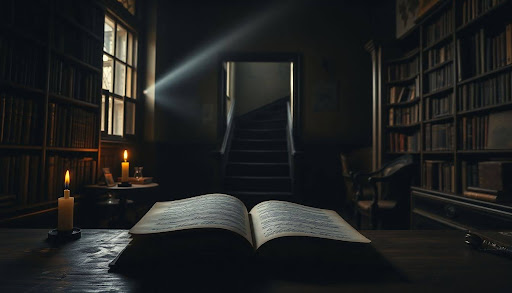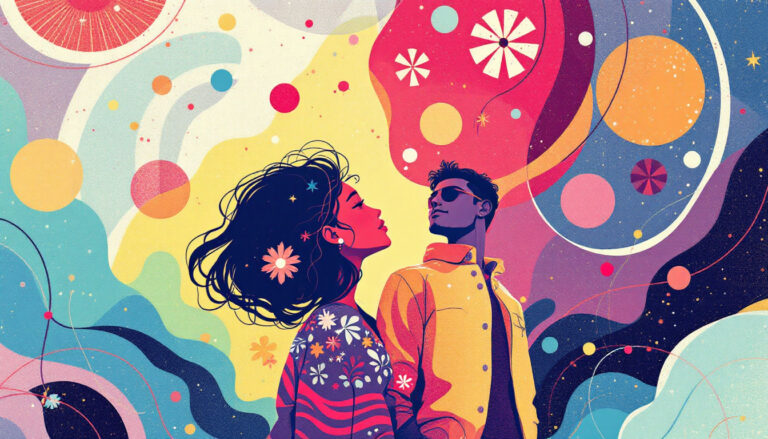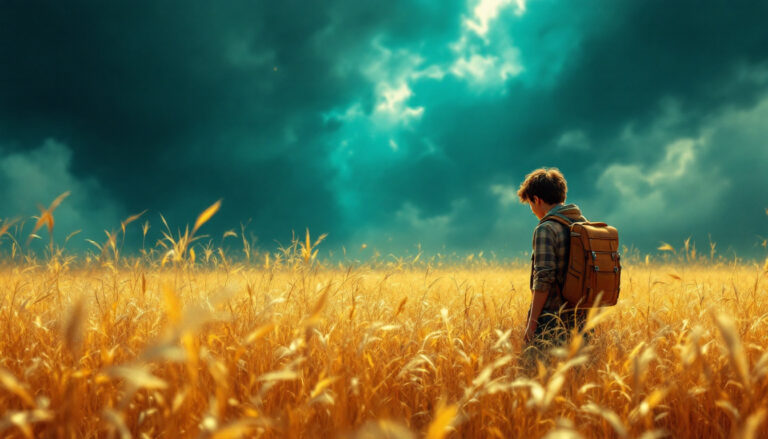Mockingjay by Suzanne Collins – Complete Review of the Final Chapter
The conclusion to Suzanne Collins’ The Hunger Games trilogy, Mockingjay, thrusts readers into a world torn by rebellion and the costs of war. Katniss Everdeen, now the reluctant symbol of hope for the uprising against the Capitol, faces her most harrowing trials yet. This book doesn’t shy away from exploring the devastating impacts of violence, betrayal, and loss. As the story unfolds, it challenges how we view courage, morality, and the limits of human endurance. Readers who’ve followed Katniss will find this final chapter gripping, thought-provoking, and emotionally powerful.
Overview of Mockingjay
The third and final installment of Suzanne Collins’ The Hunger Games series, Mockingjay, transforms the dystopian saga into a harrowing exploration of political resistance and personal sacrifice. Following the events of Catching Fire, the novel propels its characters into a broader war—a rebellion against the Capitol—with Katniss Everdeen at its helm. Let’s examine two pivotal aspects of the narrative that define its intensity and relevance.
Setting the Stage: District 13 and the Rebellion
In Mockingjay, District 13 emerges from the shadows as the strategic heartbeat of the rebellion. Long thought to be destroyed, District 13 survived underground, leveraging its extensive resources and nuclear arsenal to force a tenuous truce with the Capitol. The district serves as both a sanctuary and a battlefield, housing leaders like President Coin and their efforts to dismantle Panem’s oppressive regime.
District 13’s significance lies not just in its military strength, but also in its symbolic power. Beyond its role as a weapons supplier for the resistance, it becomes the center of political strategy and propaganda. From this heavily-controlled environment, the rebellion produces the “propos”—short for propaganda videos—that use Katniss as the Mockingjay, a unifying symbol of hope for the other districts. The strict and regimented culture of District 13 often contrasts with the freedom it’s fighting for, raising questions about the cost of rebellion and the blurred lines between leadership and control.
For a deeper understanding of District 13’s role, you can explore the history and strategic importance of the district. Its legacy as a decisive player in shaping Panem’s future resonates throughout the book.
Katniss’s Journey Through Trauma and Leadership
At the heart of Mockingjay is Katniss Everdeen’s evolution from a reluctant participant in the Hunger Games to a fractured yet determined leader. The psychological toll of her experiences manifests strongly in this installment: flashbacks, nightmares, and overwhelming guilt weigh heavily on her. Katniss struggles with acute symptoms of PTSD while being thrust into the role of the Mockingjay, a role she initially resists.
Her journey is one of survival, healing, and reluctant leadership. Katniss openly questions her ability to lead, often feeling like a pawn in a larger game orchestrated by District 13’s leaders. However, these doubts eventually fuel her authenticity. Unlike traditional heroes, Katniss’s leadership is deeply rooted in her personal pain rather than ambition. Every choice she makes—whether it’s to protect her loved ones or take a moral stand—comes at great personal cost but resonates with truth.
Despite the intense focus on physical war, the novel also explores an internal battlefield. Katniss’s struggles mirror the real-world experiences of those coping with trauma, a theme often highlighted in discussions about the franchise. Articles like this exploration of Katniss’s battle with PTSD shed light on how her character brings emotional depth and realism to the series.
Through her experiences, Suzanne Collins underscores the cost of leadership in times of conflict and showcases how pain and perseverance can coexist. The Mockingjay icon itself becomes a representation of not just rebellion but resilience, a motif that defines Katniss even when she doubts herself.
Character Relationships and Development
The relationships in Mockingjay bring emotional depth to the story, showcasing how connections shift under the strain of survival and rebellion. Suzanne Collins highlights the fragile dynamics between characters, revealing their complexities and growth amidst chaos.
Katniss and Peeta: A Complicated Bond
The bond between Katniss and Peeta becomes one of the most emotionally charged storylines in Mockingjay. After his capture by the Capitol, Peeta is subjected to “hijacking”—a cruel form of brainwashing that manipulates his memories and distorts his feelings toward Katniss. Once inseparable, their relationship suffers as Peeta oscillates between moments of clarity and violent distrust.
Peeta’s character arc reflects profound resilience and tragedy. Hijacking, as described in the book, affects his ability to distinguish reality from manipulation, turning his love for Katniss into fear and hostility. This break in their connection forces Katniss to confront not only the Capitol’s cruelty but also her own emotional vulnerabilities. Over time, their thawing interactions—marked by tension and cautious hope—paint a poignant picture of healing and forgiveness.
For more on Peeta’s transformation, check this deep dive into his character in Mockingjay.
Gale’s Character: Ideals and Conflicts
Gale Hawthorne’s role in Mockingjay evolves significantly, presenting a stark contrast to Peeta’s more reserved character. As a staunch supporter of the rebellion, Gale becomes deeply entangled in military strategies and tactics, often taking a pragmatic approach that clashes with Katniss’s moral hesitations.
Throughout the conflict, Gale’s belief in harsh measures to win the war leads to pivotal conflicts with Katniss. His designs, including the controversial trap that ultimately seals Prim’s fate, reflect a utilitarian perspective. These actions not only deepen the rift between him and Katniss but also crystallize his own transformation from a hunting partner into a hardened soldier. As their paths diverge, readers are left grappling with the consequences of war on ideals and friendships.
Explore more about Gale’s development in this analysis of his arc in Mockingjay.
The Impact of Secondary Characters
The contributions of secondary characters like Prim and Finnick infuse Mockingjay with heart and tragedy. Prim, Katniss’s sister, represents a beacon of innocence and hope throughout the series. Her death late in the story underscores the indiscriminate destructiveness of war. It is a turning point for Katniss, forcing her to question the rebellion’s ethical boundaries and the sacrifices demanded.
Finnick Odair, on the other hand, shines as a symbol of loyalty and strength amidst personal scars. His journey from disillusionment to courage culminates as he fights alongside Katniss, sacrificing himself to ensure the team’s survival. Though his death is devastating, Finnick’s legacy lives on through his unwavering support and selflessness, standing in stark contrast to the Capitol’s manipulative nature.
For a closer look at the significance of these characters, you can refer to this tribute to Finnick and Prim.
These impactful secondary characters remind readers of the emotional toll of war, showing that even the most resilient figures cannot escape its reach. Their stories add layers of depth to the overarching narrative, enhancing the themes of sacrifice and loss.
Themes and Symbolism in Mockingjay
At the heart of Suzanne Collins’ Mockingjay lies a complex tapestry of themes and symbols that elevate the story beyond its dystopian framework. From the personal struggles of its protagonist to the broader societal critiques, the novel offers a deep examination of human resilience and the consequences of power and rebellion. Below, we’ll explore key themes and symbols that shape the narrative.
The Psychological Costs of War
Collins doesn’t shy away from portraying the brutal emotional and physical toll of war, particularly through Katniss Everdeen’s journey. The horrors of battle, betrayal, and constant danger weigh heavily on her, leaving scars that go far beyond the surface. Katniss struggles with post-traumatic stress disorder (PTSD), manifesting in flashbacks, insomnia, and a pervasive sense of guilt, often questioning her own identity and role in the rebellion.
From witnessing violence to making difficult choices that result in countless deaths, Katniss’s experiences underline the dehumanizing effects of prolonged conflict. Her mental health deteriorates as she carries the burden of being the Mockingjay, the symbol of hope for an entire nation. This theme mirrors real-world wartime struggles faced by soldiers and survivors, offering a sobering lens through which readers can reflect on the far-reaching impacts of war. For a deeper dive into how PTSD is portrayed in the series, check this insightful analysis of trauma in Mockingjay.
Media and Propaganda
The novel brilliantly highlights the power of media and propaganda, showcasing their potential as both a weapon and a tool for manipulation. Throughout the story, the rebellion uses Katniss as the centerpiece of their propaganda efforts, producing “propos” designed to rally support against the Capitol. These crafted videos frame Katniss as a hero, but the process feels invasive and often strips her of personal agency.
On the other hand, the Capitol deploys its own propagandistic machine, distorting information to maintain control and suppress dissent. This battle for narrative control mirrors real-world tactics, where leaders and governments use media to sway public opinion and control information. Collins invites readers to consider how much of what we consume is controlled, and at what cost truth is sacrificed for ideology. For more insights into this theme, explore this analysis on media’s role in Mockingjay.
Symbolism of the Mockingjay
The Mockingjay itself is one of the most potent and enduring symbols in the series. Born from unintended consequences—a hybrid songbird that emerged against the Capitol’s expectations—it becomes a metaphor for rebellion, freedom, and resilience. Katniss, as the physical representation of the Mockingjay, embodies the defiance against oppression.
Throughout the story, the Mockingjay evolves beyond a bird or a figurehead. It represents the unintended strength that arises from chaotic and oppressive circumstances. However, the weight of being this symbol increasingly burdens Katniss, forcing her to reconcile her public persona with her private suffering.
The Mockingjay also emphasizes the unintended consequences of resistance. Just as the bird survived despite the Capitol’s negligence, the rebellion exists as a response to oppression and injustice. Learn more about the significance of this symbolism through this detailed breakdown on the Mockingjay icon.
Ethical Dilemmas and Moral Questions
Much of Mockingjay asks its characters and readers tough ethical questions: What is the cost of freedom? What sacrifices are too great? Katniss faces countless moral dilemmas, from deciding who to trust to recognizing when to act against those ostensibly on her side. The character of President Coin represents a complex antagonist, blurring the lines between savior and dictator. Her cold pragmatism challenges Katniss’s belief in the rebellion’s cause.
The decision to use excessive force or sacrifice innocent lives in the name of achieving victory becomes a recurring thread, epitomized by Gale’s development of “ethical traps.” These traps, meant to maximize casualties among the Capitol’s forces, end up claiming the life of Katniss’s sister, Prim. This tragedy highlights the devastating ethical consequences of war, where even noble intentions can result in irreversible damage.
These moral questions resonate with the reader, emphasizing that rebellion and leadership come with no easy answers. They challenge the reader to consider the cost of their convictions and the line between justice and vengeance. For a thorough exploration of these dilemmas, you may find insights within this analysis on the themes of war ethics in Mockingjay.
Through its exploration of themes and symbols, Mockingjay delivers a narrative that is as emotionally provocative as it is intellectually engaging. As Katniss navigates an unraveling world, Collins invites readers to reflect on their own battles, both internal and external.
Cultural and Literary Impact
The Hunger Games trilogy, and specifically Mockingjay, left a distinct imprint on both popular culture and the literary world. As the closing chapter of a beloved series, it offered a broader conversation about the nature of rebellion, trauma, and moral sacrifices. Let’s break down its impact in terms of storytelling, its contributions to the dystopian genre, and its transition from page to screen.
The Conclusion of a Landmark Trilogy
Suzanne Collins skillfully crafts Mockingjay as the final crescendo in Katniss Everdeen’s journey, but this conclusion hasn’t been without its share of debate. On one hand, the book is lauded for its raw and unflinching portrayal of war. Unlike conventional endings that promise a sense of triumph or closure, Mockingjay plunges deep into the psychological and ethical chaos that ensues with rebellion. Katniss’s arc of reluctant leadership has resonated deeply with readers, capturing the toll of being a symbol for something bigger than oneself.
However, some readers felt the pacing faltered, particularly in comparison to the action-driven narratives of the prior books. The heavy focus on propaganda, while relevant, at times overtook the personal intensity that had been central to earlier installments. Nevertheless, Mockingjay drives home the consequences of war in a way that few young adult novels dare to explore.
Its thought-provoking nature ensures its continued influence within literature discourse. For further insight into the cultural layers of the book, check out this analysis of cultural narratives within Mockingjay.
Influence on the Dystopian Genre
The Hunger Games trilogy, especially Mockingjay, significantly shaped the landscape of young adult dystopian fiction. It wasn’t simply another addition to the genre—it became a cornerstone. Mockingjay expanded the possibilities for YA narratives to explore darker, more intricate themes like societal control, media manipulation, and the psychological scars of political strife.
Books like Divergent and The Maze Runner owe much of their success to the path paved by Collins. After Mockingjay, dystopian stories increasingly featured protagonists grappling with more than just survival, showcasing internal struggles and moral ambiguity.
What sets Mockingjay apart is its departure from neat endings. By focusing on the aftermath of war and the fractured mental state of its heroine, it questioned whether true victories ever exist in oppressive systems. This layered storytelling has made it a frequent point of discussion in literary studies, inspiring research on its themes and impact on modern dystopian works. Read more on its contribution to the genre in this exploration of how the trilogy reshaped dystopian literature.
Adaptation to Film and Public Reception
Mockingjay‘s adaptation into two feature films sparked both enthusiasm and critique. Splitting the book into two movies allowed for a more detailed exploration of the source material, but some fans felt the films stretched certain sections unnecessarily, diluting the emotional gravitas present in the novel.
Despite mixed opinions on the adaptation approach, the cinematic portrayal of Panem and its rebellion garnered strong box office numbers, a testament to the book’s cultural clout. The films brought key scenes to life on an epic scale—like the propaganda “propos”—and captured the dystopian bleakness effectively through their cinematography.
However, public reception was not uniformly positive. Part 1 received some criticism for focusing too much on setup, while Part 2 garnered higher praise for its intense wartime sequences and emotional resolution. The performances of Jennifer Lawrence and Josh Hutcherson were particularly celebrated for adding depth to their complex characters. Dive into a comprehensive critique of the films at this analysis of the film adaptations.
Ultimately, whether as a book or film, Mockingjay cemented its place as a definitive work in young adult storytelling. With its bold themes and emotional narrative, it continues to engage readers and audiences, sparking conversations about power, identity, and the cost of revolution.
Conclusion
Mockingjay leaves an indelible mark as a gripping yet unsettling finale to The Hunger Games trilogy. Suzanne Collins masterfully examines the cost of rebellion, the gray areas of morality, and the psychological scars left by war. Katniss’s journey forces readers to confront uncomfortable truths about power, justice, and survival.
As the series concludes, it challenges the notion of a perfect victory, making it one of the most thought-provoking works in young adult literature. It reshaped the genre by embracing complexity and refusing to sugarcoat harsh realities.
Take a moment to reflect on the ethical dilemmas posed in the book. What would you sacrifice for freedom? Your insights might surprise you—share your thoughts in the comments or revisit the series with fresh eyes.







